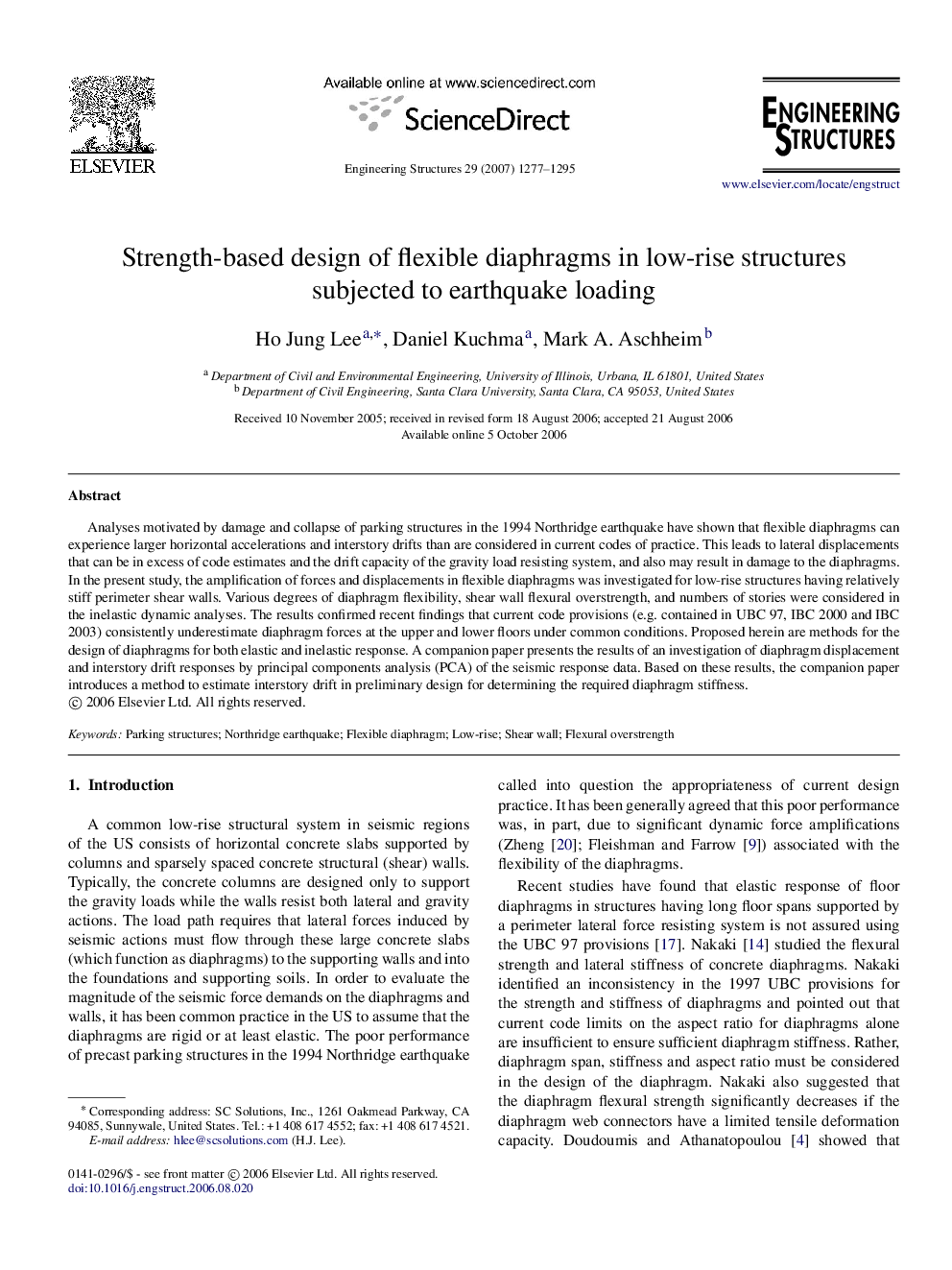| Article ID | Journal | Published Year | Pages | File Type |
|---|---|---|---|---|
| 269440 | Engineering Structures | 2007 | 19 Pages |
Analyses motivated by damage and collapse of parking structures in the 1994 Northridge earthquake have shown that flexible diaphragms can experience larger horizontal accelerations and interstory drifts than are considered in current codes of practice. This leads to lateral displacements that can be in excess of code estimates and the drift capacity of the gravity load resisting system, and also may result in damage to the diaphragms. In the present study, the amplification of forces and displacements in flexible diaphragms was investigated for low-rise structures having relatively stiff perimeter shear walls. Various degrees of diaphragm flexibility, shear wall flexural overstrength, and numbers of stories were considered in the inelastic dynamic analyses. The results confirmed recent findings that current code provisions (e.g. contained in UBC 97, IBC 2000 and IBC 2003) consistently underestimate diaphragm forces at the upper and lower floors under common conditions. Proposed herein are methods for the design of diaphragms for both elastic and inelastic response. A companion paper presents the results of an investigation of diaphragm displacement and interstory drift responses by principal components analysis (PCA) of the seismic response data. Based on these results, the companion paper introduces a method to estimate interstory drift in preliminary design for determining the required diaphragm stiffness.
